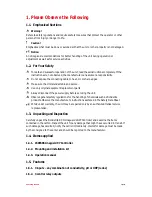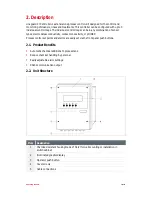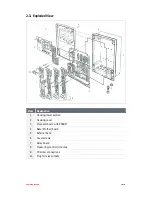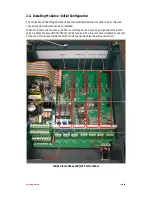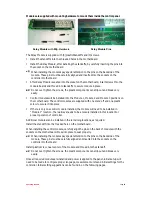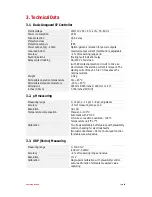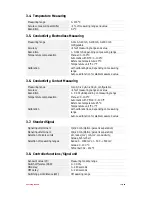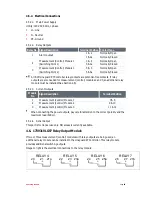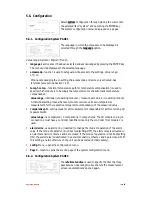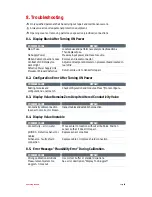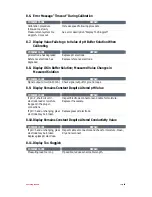
Operating Manual
Page 20
4.7.1. Sensor Immersion Installation Requirements
All Sensors
Locate a suitable location to measure representative sample of the bath. For immersion
assembly, the location should be in the top of the process tank where the sensor immersion
assembly can be placed without interference from piping or other obstacles. The immersion
assembly must be capable of being lifted out of the process tank for maintenance. The sensor
cable must not touch heated piping, nor may it be allowed to drape onto the top of the tank
where it may be in contact with standing fluids. The location must not be near chemical
additions, water additions, or heating coils; all of which will adversely affect both the quality of
the control and the physical well-being of the sensor assembly. Do not mount on a removable
lid, because the sensors must be moved as little as possible for the longest sensor life.
Drill a hole for the sensor to fit through in the top of the process tank at the chosen
location.
Install the sensor in the process tank through the hole. Use the round stainless steel disk to
adjust the depth of the sensor immersion.
Run the cable to the bottom of the Lineguard 97 controller and through it’s strain relief.
Tie the excess sensor cable into a loose loop with plastic cable ties and attach to any
convenient, cool piping or brackets to hold the cable out of the way of maintenance
activity on the tank.
Never cut or modify the sensor cable!
Attach the cable wires to the respective function module using the wiring diagrams shown
in the section 4.7.1 “Sensor Electrical Connections to Each Style”.
If required, calibrate the sensor.
Do not use a new system to control a process until the system has been verified for proper
operation to the chemical operator’s satisfaction, and then commence automatic control.
Electrodeless & Contact Conductivity
Immersion sensors must be located a minimum of 150mm off the bottom of the process tank.
Sensors typically fail after extended service or improper handling causing cracking and allowing
solution to enter the sensor housing and internal wiring. This requires replacement of entire
sensor.
pH
pH sensors will degrade in normal service and periodic replacement of the pH sensor is
required. 6 to 12 months is the expected life span for pH sensors in normal operation. Life span
is dependent on proper sensor care and operating conditions.
ORP
Platinum ORP sensors will degrade in normal service and require periodic replacement of ether
the electrode, filling solution, or both.
4.8. Start up
Before switching on the main voltage, check that the voltage matches the Lineguard 97
Controller nameplate.

